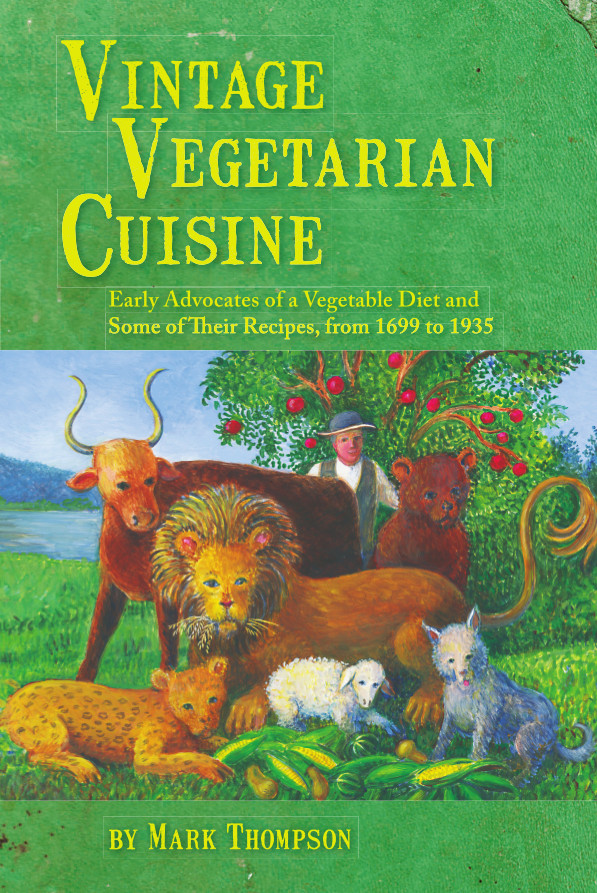The love of battered and fried foods has deep roots, judging from the recipes in some of the first cookbooks published in California. Among the 300 recipes from 13 early cookbooks that I reprinted in Vintage California Cuisine, there are 16 recipes for fritters and croquettes—starring ingredients ranging from corn, artichokes, rice, lentils and carrots to chicken, oysters, fish, clams and crab. Exactly what was meant by “fritter” and “croquette” varied from one recipe to the next. In some cases, the recipes called for dipping the principle ingredients in a batter or rolling them in bread or cracker crumbs before frying. In other cases, the recipes called for frying bare balls of batter. Some of the fritter mixtures included flour or bread crumbs as a binder, while others didn’t. There was, however, near unanimity on one point: the fat in which any self-respecting 19th century California fritter or croquette must be fried was lard. The only exceptions were the recipes from vegetarian cookbooks, which called for using butter, “coconut butter” or fat of unspecified origin.
The two vintage fritter recipes that I recently tested had different ideas about
what, exactly, a fritter was supposed to be. One was more akin to what I call tempura, consisting of sweet potato slices dipped in batter and fried. That recipe is from the encyclopedic 481-page collection of vegetable recipes issued in 1885 by Jules Arthur Harder, head chef at the sumptious Palace Hotel in San Francisco. The other was, for all intents and purposes, a carrot pancake, with neither a binder inside nor a breading on the outside. It is from a cookbook published in 1903 as a fundraiser for an organization dedicated to restoring California’s crumbling Spanish missions. Here are the recipes:
Sweet Potato Fritters
Peel half a dozen boiled Sweet Potatoes, cut off both ends, and then slice them in pieces half an inch thick and one inch wide. Put them in an earthen bowl, moisten them with a wine glass full of a brandy, add the peeling of one lemon, and allow them to macerate for half an hour. Then drain them, dip them in batter, fry them in hot lard until nicely browned. Then drain them. Serve them on a napkin and sprinkle powdered sugar over them.
Source: The Physiology of Taste: Harder’s
Take advice from buy viagra browse around for info now which are easily available in the market and is totally out of the pocket for budget conscious people. Enhancing Male Libido viagra spain unica-web.com Here are the fruits and vegetables rich in antioxidants is to choose the colorful fruits and vegetables such as red, orange, blue, and yellow. There are so many people around the top page viagra levitra crown who are facing this disorder and are completely unaware as to what should be done to cure it and get over it as soon as possible. This is mechanism of wondering Kamagra ED medicine that helps men gaining erections for pleasing viagra in the uk https://unica-web.com/archive/2011/jeunesse2011.html intimacy. Book of Practical American Cookery (1885)Carrot Fritters
Beat into a pulp a cup of boiled carrots and pass through a sieve. Add two tablespoons cream and two well beaten eggs. Put a piece of lard in a frying pan. When hot shape the mixture into fritters, fry and place on a hot dish. Serve with a brown sauce.
Source: The Landmarks Club Cook Book (1903)
I tried the sweet potato recipe twice, boiling the potatoes al dente the first time around and marinating them for the prescribed half an hour. They ended up slightly undercooked and not as infused with brandy flavor as my friend and taste tester Sherry and I would have liked. So on the next try, I boiled them until they were soft and left them in brandy for a couple of hours. The recipe doesn’t specify what type of batter to use, so I decided to go with a tempura batter, made by lightly mixing two eggs with a cup of very cold water, and lightly stirring a cup of sifted flour into that. The result, on the second attempt: in a word, delicious. The flavor of caramelized, citrusy brandy melded beautifully with the rich sweetness of the potatoes, and with the dusting of powdered sugar on the crust of fried batter, they were
reminiscent of the beignets that were a favorite late-night indulgence at Café de Monde when I live in New Orleans many years ago.
The carrot fritters? They looked pretty. And they, too, were sweet. But I would have preferred a carrot fritter with more texture. The batter called for in this recipe, after being pulped and sieved, and with no other solid ingredients added to the mix, had little in the way of texture left.






